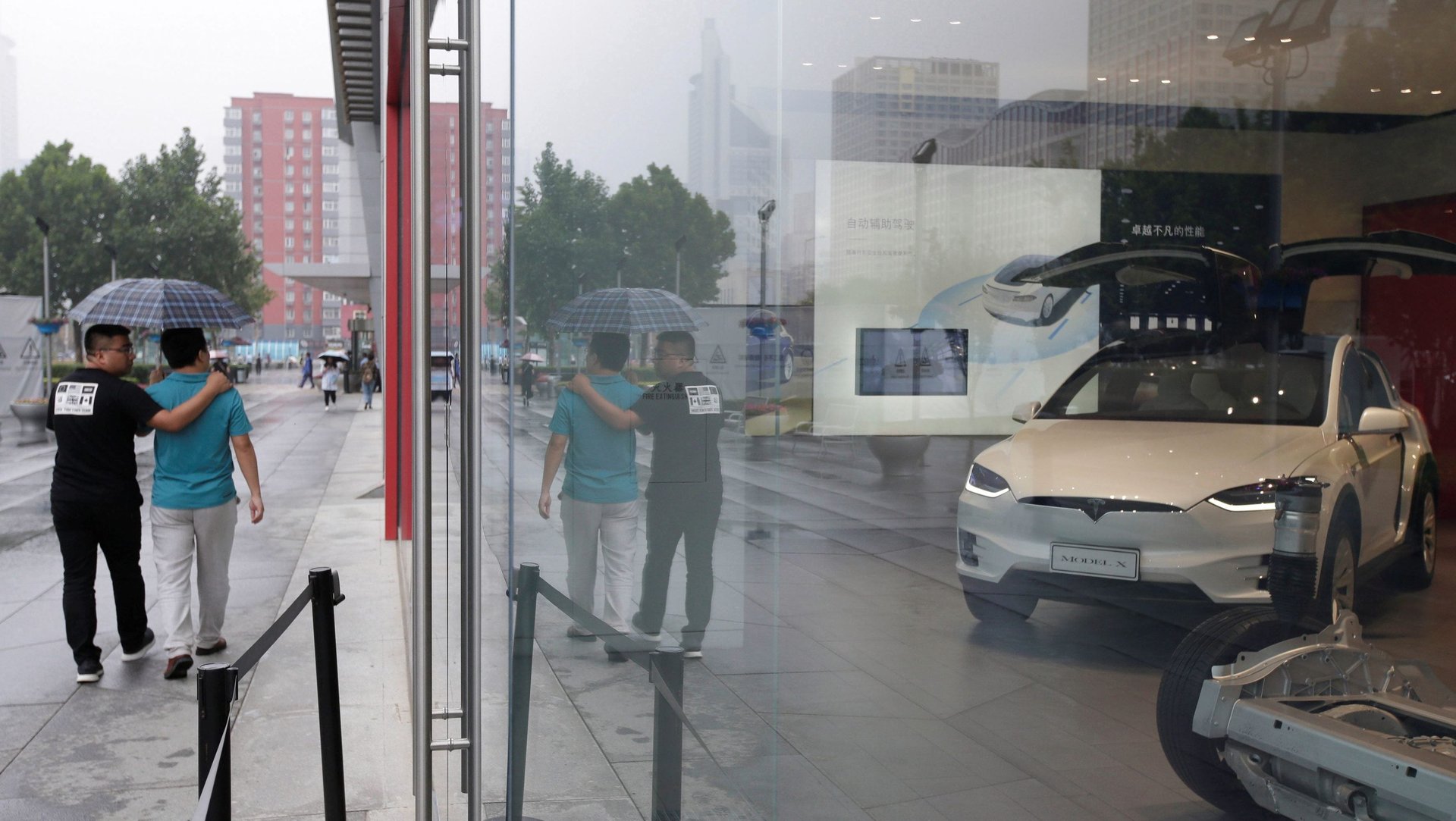Tesla plans to hit the ground running in China in 2019
Around this time last year, Tesla CEO Elon Musk said that the electric carmaker had a “rough target” to start making vehicles in China, the firm’s biggest overseas market, in three years. Thanks to the trade war, that plan went into high gear—and the first made-in-China Tesla could even arrive next year.


Around this time last year, Tesla CEO Elon Musk said that the electric carmaker had a “rough target” to start making vehicles in China, the firm’s biggest overseas market, in three years. Thanks to the trade war, that plan went into high gear—and the first made-in-China Tesla could even arrive next year.
The Palo Alto, California-based carmaker last week set up a financial leasing company with capital of $30 million based in Shanghai’s free-trade zone, Reuters reported on Thursday (Dec. 27), adding that the new entity’s listed legal representative is also Tesla’s China head, Zhu Xiaotong.
The latest development for Tesla’s China plant comes after the Shanghai government this month said on a social media account (link in Chinese) Tesla could start manufacturing in the second half of 2019, as the carmaker began soliciting bids related to building its Gigafactory 3. The $2 billion project will be the carmaker’s first overseas factory, and will make Model 3 and Model Y cars for the China market, Reuters reported. At least one contractor has started buying material for the construction work, the news outlet said, citing unnamed sources. The firm expects the factory, for which it’s acquired 200 acres, to have an annual capacity of 250,000 vehicles.
Tesla declined to comment on Quartz’s queries about the Gigafactory’s status.
Tesla’s China production plans were first reported last October, but Musk had asked investors not to set a timer for the start of production in China. This year’s trade war between China and the US appears to have contributed to Tesla’s efforts to move more quickly, after the company’s car prices see-sawed in China.
Earlier it was unclear how Tesla could have a fully-owned car plant in China, with investment rules requiring foreign car makers to enter into joint ventures with local firms, something Tesla appeared reluctant to do. But as part of China’s efforts to reach a compromise with the US—and as the country heavily backs the adoption of electric vehicles to help deal with pollution and spur innovation—Beijing in April announced foreign investment rules that lifted caps for foreign investment in the electric car industry.
In May, the carmaker registered a company in Shanghai for the manufacturing and sale of electric cars. Then it signed an agreement with the Shanghai government to build its Gigafactory there, after Musk traveled to city in July, just after the first round of US-China tariffs went into effect.
That month, as China’s duties on US cars jumped from 15% to 40%, Tesla raised prices by about $20,000. In October, the firm said in its third-quarter earnings report that it had decided to accelerate its manufacturing timeline in China “in order to significantly increase the affordability of Model 3,” adding that the firm was “aiming to bring portions of Model 3 production to China during 2019.”
Tesla cut its prices three times between October and December, as the firm saw its battery-electric-vehicle sales slump 70% to 211 in October compared to the sales in the same month last year. (The company disputes the figure from China Passenger Car Association, an organization that sources data from retailers.)
Tesla made its latest price adjustment this week, putting its Model 3 at a starting price of $72,000 in China, around $11,500 cheaper than in November when Tesla started taking orders for the model in China. The price drop came after China agreed to bring duties on imported US cars back down to 15% for three months, as the US and China try to iron out their differences ahead of a March 1 deadline.
Next year is crucial for electric carmakers in China, as the country replaces its monetary subsidies with a cap-and-trade system for the EV industry. Under the system, all carmakers in China, which includes Tesla if it starts manufacturing next year, need to meet EV production quotas, which will rise each year. Those who meet the quota will get credits they can sell to competitors that don’t manage to hit the mark.
Looking for more in-depth coverage? Sign up to become a member and read more in-depth coverage of China’s electric-car boom in our field guide.